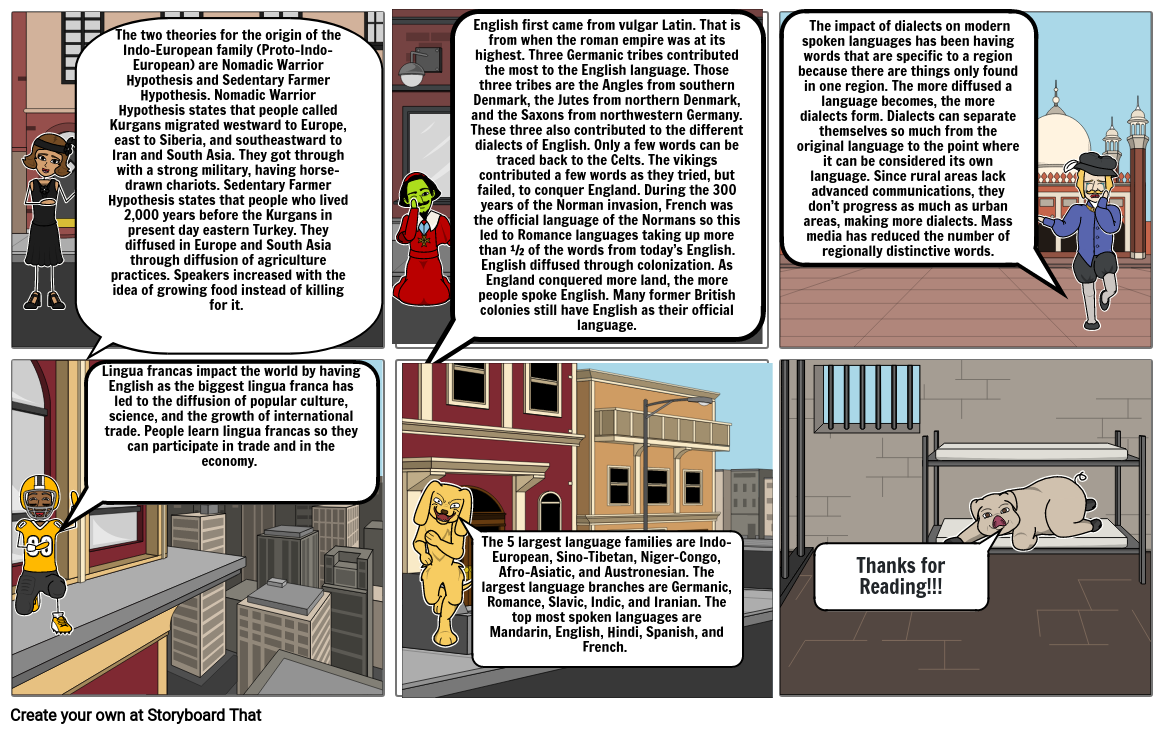Main Course of Project!!!

Storyboard Text
- The two theories for the origin of the Indo-European family (Proto-Indo-European) are Nomadic Warrior Hypothesis and Sedentary Farmer Hypothesis. Nomadic Warrior Hypothesis states that people called Kurgans migrated westward to Europe, east to Siberia, and southeastward to Iran and South Asia. They got through with a strong military, having horse-drawn chariots. Sedentary Farmer Hypothesis states that people who lived 2,000 years before the Kurgans in present day eastern Turkey. They diffused in Europe and South Asia through diffusion of agriculture practices. Speakers increased with the idea of growing food instead of killing for it.
- English first came from vulgar Latin. That is from when the roman empire was at its highest. Three Germanic tribes contributed the most to the English language. Those three tribes are the Angles from southern Denmark, the Jutes from northern Denmark, and the Saxons from northwestern Germany. These three also contributed to the different dialects of English. Only a few words can be traced back to the Celts. The vikings contributed a few words as they tried, but failed, to conquer England. During the 300 years of the Norman invasion, French was the official language of the Normans so this led to Romance languages taking up more than ½ of the words from today’s English. English diffused through colonization. As England conquered more land, the more people spoke English. Many former British colonies still have English as their official language.
- The impact of dialects on modern spoken languages has been having words that are specific to a region because there are things only found in one region. The more diffused a language becomes, the more dialects form. Dialects can separate themselves so much from the original language to the point where it can be considered its own language. Since rural areas lack advanced communications, they don’t progress as much as urban areas, making more dialects. Mass media has reduced the number of regionally distinctive words.
- Lingua francas impact the world by having English as the biggest lingua franca has led to the diffusion of popular culture, science, and the growth of international trade. People learn lingua francas so they can participate in trade and in the economy.
- The 5 largest language families are Indo-European, Sino-Tibetan, Niger-Congo, Afro-Asiatic, and Austronesian. The largest language branches are Germanic, Romance, Slavic, Indic, and Iranian. The top most spoken languages are Mandarin, English, Hindi, Spanish, and French.
- Thanks for Reading!!!
Peste 30 de milioane de Storyboard-uri create

